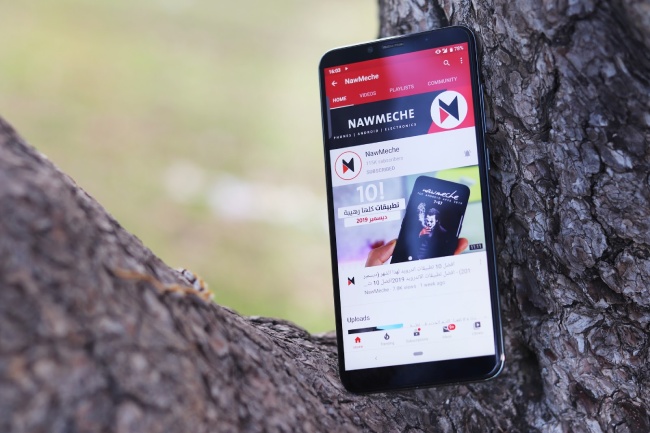We are currently finding ourselves in the age of the smartphone. Globally, people are spending more and more time on their mobile phones than before and using the device for a plethora of reasons.
Table of Contents
From entertainment to communication, payment platforms, and social media, the device has evolved rapidly over the last few years to become the one-stop-shop for instant gratification.
Part of this mobile evolution has been online shopping. Mobile penetration has made it easier, more efficient, and more convenient to shop from your mobile phone.
In fact, research shows that by 2019, mobile purchases had doubled from 2015, when it was in its introductory phase globally. By the end of 2020, it is expected to be worth a whopping $284 billion in the US alone.
There have been various contributing factors to the rise in popularity of m-commerce, including social media introducing “buy buttons” and Google ranking sites higher if they are mobile-friendly. But one of the biggest contributors to the rise of mobile shopping is the development and growth of apps.
So, if you are looking to develop an app to grow your business, we thought we would take a look at just how to do it. With these hints, you will be able to turn your website into an app in a few easy steps.
Related Post:Why Mobile App is Important for E-commerce Businesses
Let’s Talk About Apps
Before we get into the nitty-gritty of how to actually convert your website to a mobile-friendly app, we thought we would take a look at why it is important for you, as a growing business to invest in this type of technology.
More customers are starting to choose apps over website shopping due to the fact that apps allow a higher rate of instant gratification than websites. In fact, 89% of customers will choose an app over shopping on a website.
Companies that have optimized their app design find that customers are more drawn to completing purchases on the app for the following reasons:
- It is more personal. You can save your payment, billing, and delivery details on the app for fast, efficient checkout. The app will also pick up preferences of the user and personalize products according to their interests and purchases;
- They work quickly. Due to the frameworks of the apps, they perform quicker than most websites and with the rankings of preferences, the customer can find their product quicker;
- You can connect with your customer regularly and easily. Not only can instant chat be integrated into the app, but regular push notifications can prompt your customer to return to the app and make new purchases.
How To Actually Create An App
There are two predominant ways of actually creating an app for your business. Both have their benefits and downfalls, and it is really up to you to decide which works best for your business.
You can decide whether you want your full website on the app, or if you want to pick out certain key features to appeal directly to the mobile audience. Either way, we highly recommend that you keep testing your choice and ascertain over time what needs to be added or removed to increase conversions.
Let’s take a look at your two options for creating an app.
Using Convertors
This method is essentially using an online converter tool that reads all of the features of the site, transfers them to the future app, and builds it up using various templates. It can then be published across various stores.
These tools allow businesses to make apps affordably and quickly, offering apps in just a few clicks. You can highlight all of the features from your site that you want to be reflected on the app and allow the tool to build it for you.
You can pay anything from $30 to $200 for these tools, which seems almost too good to be true. The fact of the matter is, that although these come with the benefits of being affordable and simple, these are not custom-made, customer-centric apps that work on every device.
In fact, certain tools just create browser-wrappers that are not fully functional.
If you do decide to go down this road, make sure you do thorough research into your app platform options. Many have poor performance, are only suitable for Android, and can also hold a number of security issues.
Creating an App Professionally
The next way to create an app is to actually create it from scratch. Although this is more time consuming and less affordable, your result will be a customer-centric, branded app that is created to drive conversions and sales for your company.
Here is how you can go about it.
Create an MVP
An MVP is a minimum viable product that is built as a functional prototype to show the key features that will be included in the app.
You will be able to build up the features over time, affordably be able to test the idea and allow a targeted audience access to it to provide feedback on the functionality.
Think of an MVP as your test subject. It can pinpoint the pitfalls in the design of the app as well as show you where you can build up the features.
It allows you to find the balance between what your business is offering to the users and what they actually need. Because the users testing the MVP are a selection of your targeted audience, you are able to establish how your final app looks with very little resources.
In order to create an MVP that actually pulls in useable information about how your app should be formatted, these steps will help in creating a viable MVP:
- Conducting market research;
- Focusing on the added value of the design and MVP;
- Mapping out the user flow;
- Focusing on the features, which work, which don’t and what is missing;
- Launching and testing the MVP.
Things like logos, forms, calls-to-action, images, and content and navigability can be placed and tested with an MVP. It is a resource-light way to plan your future app and to launch something with very little risk.
Focus on UX
The next step is to focus your attention on the design of the app. Taking the key principles of UX into consideration, build up the app along those lines. If you are wondering what UX is, it is the design of the mobile app that encompasses the subjective experience that a user has with it.
The design is specifically and carefully mapped out to ensure that the user is provided with a meaningful and relevant experience.
There are a number of things that you need to take into consideration for mobile UX. Keep in mind, you are dealing with smaller screens, more challenging network issues, and challenges of how people actually hold their devices.
All of this has to be taken into consideration when creating the layout and formats of the app. These are the key principles of UX that you need to consider:
- Consistency. The app will need to be consistent with what is found on your website. Not only does the branding need to be the same, but the buttons, call to actions and content need to be replicated. In saying this, however, you cannot simply copy/paste a website onto an app.
There are a number of features that you will need to drop and others that you need to alter slightly. - Simplicity. Following on from what is mentioned above, reducing the number of features will ensure that your app is more simple to use.
Remember, you are dealing with a smaller screen and possible lags in loading. Too much clutter will put your customer off. - Gesture. based navigation. Keep in mind how users hold their phones. You will need to consider how they swipe, scroll and move on the app to make it as user friendly as possible.
- Instant gratification. This is the most important thing for your apps. From autogenerated forms to saving key customer information like credit card information, billing, and shipping addresses as well as customer preferences, building these features into your app will heighten your conversion rates.
Consider the Mobile Platforms
The last thing to keep in mind when creating an app is whether it will work across all mobile platforms. It is important to keep testing the app as you go along to verify that the features and format work for the narrowed, vertical format of mobile.
You will also need to ensure that it works for both Android and iOS, which both come with their unique features and differences. iOS can be a lot trickier than Android, so we recommend that you test often and monitor performance constantly.
Wrapping Up
The last thing that we would like to leave you with when it comes to creating an app for your website, is to keep the customer in mind at all times. How accessible is the app? What is the navigability like? How user-friendly is it?
Your app will work totally differently from your site as your customer is more likely to scroll continuously and your folds will be much lower, or non-existent. Keep testing your app at all times, and should you make any changes to it, A/B test the options to ensure it is optimized immediately.



